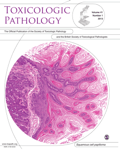
TOXICOLOGIC PATHOLOGY
Scope & Guideline
Exploring the Complex Interactions of Toxicology and Pathology
Introduction
Aims and Scopes
- Toxicological Mechanisms and Pathology:
Research exploring the cellular and molecular mechanisms by which toxic substances induce pathological changes in various organ systems, including liver, kidney, and lung. - Histopathological Assessments:
Emphasis on the development and application of histopathological techniques to evaluate the effects of toxicants in animal models, contributing to the understanding of disease processes. - Preclinical Toxicity Studies:
Focus on the assessment of safety and efficacy of new drugs and chemicals through rigorous preclinical studies, including the use of animal models to predict human responses. - Novel Methodologies in Toxicology:
Incorporation of advanced technologies such as gene expression analysis, organoid models, and machine learning techniques to enhance the evaluation of toxicological effects. - Contributions to Regulatory Toxicology:
Providing insights and data that aid in the regulatory approval process for pharmaceuticals and chemicals, focusing on the implications for human health.
Trending and Emerging
- Organoid and 3D Culture Models:
There is a growing interest in utilizing organoid models and three-dimensional cultures for toxicological assessments, allowing for more physiologically relevant evaluations of drug and chemical effects. - Machine Learning and AI in Toxicology:
The application of artificial intelligence and machine learning techniques for analyzing toxicological data is trending, enhancing the ability to predict outcomes and streamline assessments. - Biomarkers of Toxicity:
Research focusing on identifying and validating biomarkers for early detection of toxicity is on the rise, providing critical insights for predictive toxicology. - Integrated Approaches to Risk Assessment:
Emerging studies are increasingly adopting integrated approaches that combine histopathological, biochemical, and behavioral evaluations to assess the overall impact of toxicants. - Focus on Environmental Toxicology:
There is an increasing emphasis on the effects of environmental toxicants and pollutants on health, reflecting a broader concern for ecological impacts and public health.
Declining or Waning
- Traditional Toxicity Testing Models:
There is a noticeable reduction in studies relying solely on traditional animal models for toxicity testing, as newer methodologies and in vitro models gain traction. - Single-Factor Toxicological Studies:
Research focusing on the effects of single toxicants in isolation is becoming less frequent, with a trend towards more complex studies that consider multi-factorial interactions. - Basic Histopathological Techniques:
The reliance on basic histopathological examinations without incorporating advanced imaging or molecular techniques is decreasing, as the field moves towards more integrative approaches. - Carcinogenicity Studies in Long-Term Models:
The traditional long-term carcinogenicity studies in laboratory animals are becoming less common, as shorter, more predictive models and alternative methods are being developed. - Generalized Toxicity Assessments:
Research that provides broad, non-specific toxicity assessments is waning in favor of studies that focus on specific mechanisms or pathways affected by toxicants.
Similar Journals
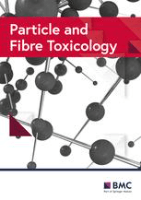
Particle and Fibre Toxicology
Innovating research in environmental health.Particle and Fibre Toxicology is a leading open-access journal dedicated to advancing the field of toxicology, specifically focusing on the health impacts of particulate matter and fibers. Published by BMC since 2004, this journal operates from its offices in the United Kingdom and has gained significant recognition in the scientific community, achieving an impressive impact factor that highlights its relevance and influence. As indicated by its Q1 ranking in various categories including Health, Toxicology and Mutagenesis and Medicine (miscellaneous), it occupies a prestigious position in the academic landscape, appealing to researchers, professionals, and students alike. With a Scopus ranking of #4 in Toxicology and #7 in Environmental Science, the journal ensures high visibility and accessibility, providing a platform for the dissemination of key research findings and innovative methodologies in the interdisciplinary domains of toxicology. Through its commitment to open access, Particle and Fibre Toxicology fosters knowledge-sharing and collaboration, facilitating significant advancements in our understanding of the toxicological effects of environmental agents.

EXPERIMENTAL ANIMALS
Connecting researchers with transformative findings in animal science.EXPERIMENTAL ANIMALS is a leading journal that serves the vibrant fields of Animal Science, Veterinary Medicine, and Biochemistry, Genetics, and Molecular Biology, published by the prestigious INT PRESS EDITING CENTRE INC in Japan. Boasting an impressive track record since its inception in 1974, the journal has positioned itself as a crucial platform for researchers aiming to disseminate innovative findings in experimental animal research. With a commendable impact factor and categorized in the Q2 and Q3 quartiles by Scopus in various relevant fields for 2023, EXPERIMENTAL ANIMALS exemplifies excellence in its contributions to science. The journal offers a comprehensive range of articles spanning from animal welfare and experimental methodologies to genetic studies, ensuring a multidisciplinary approach that appeals to a diverse audience of researchers, professionals, and students. Access to its wealth of knowledge fosters significant advancements in research and practice, underlining the journal's commitment to enhancing understanding of animal models in scientific inquiry.

Journal of Environmental Science and Health Part C-Toxicology and Carcinogenesis
Exploring the Nexus of Environment and HealthThe Journal of Environmental Science and Health Part C-Toxicology and Carcinogenesis is a vital publication in the fields of environmental science, toxicology, and cancer research, published by Taylor & Francis Inc. With an ISSN of 2689-6583 and E-ISSN 2689-6591, this journal provides a platform for peer-reviewed research that explores the intersection of environmental factors and health outcomes, particularly focusing on toxicological and carcinogenic impacts. Though it does not currently offer Open Access, it remains a significant contributor to academia with its current ranking in the Q4 category for Cancer Research and Q3 in Health, Toxicology and Mutagenesis. The journal has converged from 2020 to 2024 and aims to disseminate pioneering studies that inform public health policies and foster a deeper understanding of environmental toxins. Aspiring researchers, professionals, and students will find this journal to be an essential resource for the latest findings and discussions within these critical fields.

Food Additives and Contaminants Part A-Chemistry Analysis Control Exposure & Risk Assessment
Empowering researchers to mitigate risks in food safety.Food Additives and Contaminants Part A-Chemistry Analysis Control Exposure & Risk Assessment, published by Taylor & Francis Ltd, is a leading journal in the field of food science, toxicology, and public health. With an ISSN of 1944-0049 and an E-ISSN of 1944-0057, this esteemed publication has established itself as a vital resource for researchers and professionals involved in the analysis and regulation of food additives and contaminants. Since its inception and through its converged years from 2008 to 2012 and again from 2014 to 2023, the journal has maintained an impactful presence, notably achieving a Q2 ranking in diverse categories including Chemistry (miscellaneous) and Food Science, alongside commendable standings in Health and Environmental Health. The journal’s mission is to foster high-quality research by providing a platform for critical studies related to chemical analysis, exposure assessments, and risk management in food safety. By prioritizing engaging, peer-reviewed content, it aims to enhance understanding and mitigate risks associated with food additives, making it an indispensable tool for academics, practitioners, and policymakers alike.
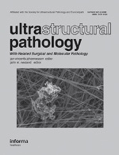
ULTRASTRUCTURAL PATHOLOGY
Pioneering Research in Forensic and Experimental PathologyULTRASTRUCTURAL PATHOLOGY is a prestigious academic journal published by Taylor & Francis Inc, focusing on the intricate and detailed aspects of pathology as well as forensic medicine since its inception in 1980. With an ISSN of 0191-3123 and an E-ISSN of 1521-0758, this journal provides a vital platform for researchers and professionals to disseminate innovative findings pertinent to both clinical and experimental pathology. Despite not being an open-access journal, its contributions are critical within its categories, positioned at the Q3 quartile in Pathology and Forensic Medicine and Q4 in Structural Biology as of 2023. The journal's reputation is further underscored by its Scopus rankings, placing it in the 41st percentile for Pathology and 15th percentile for Structural Biology, indicating a competitive standing in these fields. ULTRASTRUCTURAL PATHOLOGY aims to foster rigorous scholarly discourse and advance knowledge through the publication of original research articles, reviews, and case studies, making it an essential resource for academics, practitioners, and students engaged in the evolving domains of pathology and structural biology.

Toxicological Research
Advancing toxicological knowledge for a safer tomorrow.Toxicological Research is a prominent academic journal dedicated to advancing the field of toxicology through rigorous exploration and innovative research. Published by the Korean Society of Toxicology, this journal serves as a vital resource for researchers, professionals, and students engaged in environmental science, pharmacology, and toxicology. With an ISSN of 1976-8257 and an E-ISSN of 2234-2753, Toxicological Research highlights significant findings and discussions in the realm of health, toxicology, and mutagenesis. Although not an open-access journal, it maintains a solid reputation as evidenced by its Q3 ranking in both health-related toxicology and general toxicology categories for 2023. The journal covers a broad spectrum of topics from fundamental research to applied toxicology and provides a unique platform for the dissemination of knowledge in a field that is increasingly relevant in today’s society. With an anticipated convergence period from 2008 to 2024, Toxicological Research continues to contribute vital insights to understanding the implications of toxic substances on health and the environment.
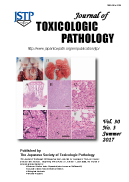
Journal of Toxicologic Pathology
Bridging Disciplines: Pathology Meets Toxicology.Journal of Toxicologic Pathology is a pivotal resource in the realm of pathology and toxicology, published by the Japanese Society of Toxicologic Pathology. Since its inception in 1988, this esteemed journal has been committed to advancing scholarly discourse through the dissemination of rigorous research and reviews that address the intricacies of toxicologic pathology. With a current impact factor placing it in the Q3 quartile in both Pathology and Forensic Medicine as well as Toxicology categories, it serves as a crucial platform for academics and practitioners to share insights and findings. Situated in Japan, this journal fosters international collaboration, welcoming contributions that span diverse geographical and scientific contexts. Although not open access, it continues to play a significant role in shaping the future of toxicological research and education, and it remains an invaluable asset for those engaged in the study of disease mechanisms, safety assessments, and the impact of toxic substances on biological systems.
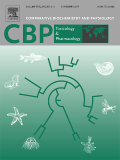
COMPARATIVE BIOCHEMISTRY AND PHYSIOLOGY C-TOXICOLOGY & PHARMACOLOGY
Bridging Laboratory Discoveries with Real-World ApplicationsComparative Biochemistry and Physiology C-Toxicology & Pharmacology, published by Elsevier Science Inc, stands as a prominent resource in the fields of pharmacology, toxicology, and biochemical research. With its ISSN 1532-0456 and E-ISSN 1878-1659, this journal has carved out a significant niche, focusing on the comparative aspects of biochemical and physiological data across various species. Recognized for its impact in diverse fields, it boasts a Q1 ranking in Animal Science and Zoology, Aquatic Science, Health, Toxicology and Mutagenesis, alongside respectable standings in other related disciplines. Researchers and professionals can leverage this publication to access high-quality, peer-reviewed studies that advance the understanding of biochemical processes and their toxicological implications. The journal aims to bridge the gap between laboratory findings and real-world applications, fostering an environment for interdisciplinary collaboration. For academics seeking to enhance their knowledge or contribute to this impactful field, Comparative Biochemistry and Physiology C-Toxicology & Pharmacology serves as an invaluable platform.
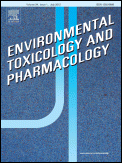
Environmental Toxicology and Pharmacology
Unveiling the complexities of toxicology and health.Environmental Toxicology and Pharmacology, published by Elsevier, is a leading journal dedicated to advancing our understanding of the effects of environmental pollutants on biological systems. With an ISSN of 1382-6689 and an E-ISSN of 1872-7077, this journal covers a wide range of studies related to toxicology, pharmacology, and environmental health. The journal is classified as Q2 in key categories such as Health, Toxicology and Mutagenesis and Medicine (miscellaneous), and sits impressively in Q1 for Toxicology, reflecting its strong impact in the field. As of 2023, it ranks #30 out of 133 in Toxicology and #40 out of 148 in Health, indicating its high relevance and contribution to research. While the journal is not currently open access, it remains a pivotal resource for researchers, professionals, and students seeking to explore the intricacies of environmental health effects. Its commitment to publishing high-quality peer-reviewed research positions it as a crucial platform for scientific dialogue and discovery.
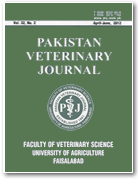
PAKISTAN VETERINARY JOURNAL
Connecting global research to local practices.Pakistan Veterinary Journal (ISSN: 0253-8318, E-ISSN: 2074-7764) is a leading peer-reviewed academic journal published by the University of Agriculture, Faculty of Veterinary Science, situated in Faisalabad, Pakistan. Since its inception, the journal has embraced an Open Access policy, facilitating the dissemination of vital research findings to a global audience and enhancing the visibility of veterinary science. With an impressive Q1 ranking in the veterinary miscellaneous category, the journal ranks #27 out of 194 in the veterinary general field according to Scopus, placing it in the top 14% of the discipline. The scope of the journal encompasses a wide array of topics relevant to veterinary medicine, ensuring that it serves as an essential resource for researchers, professionals, and students alike. By providing a platform for high-quality research from 2009 to 2024, the Pakistan Veterinary Journal continues to play a pivotal role in advancing veterinary science, promoting collaboration among scholars, and addressing contemporary challenges in animal health and welfare.